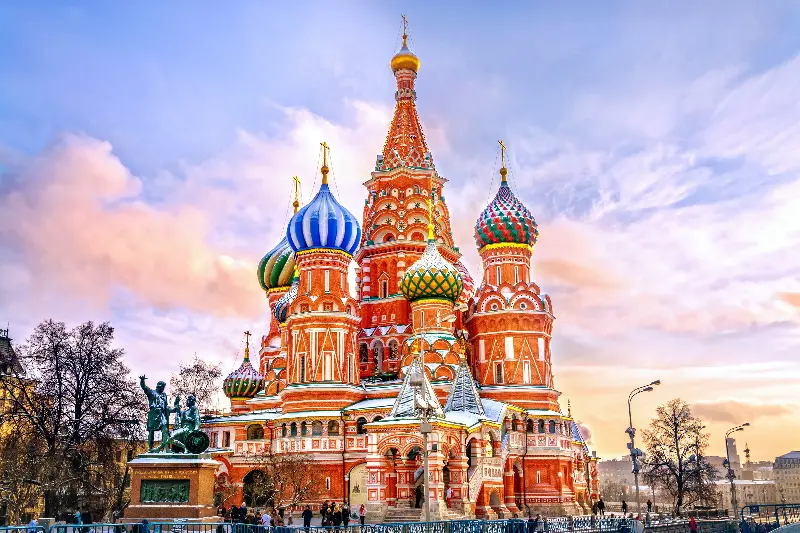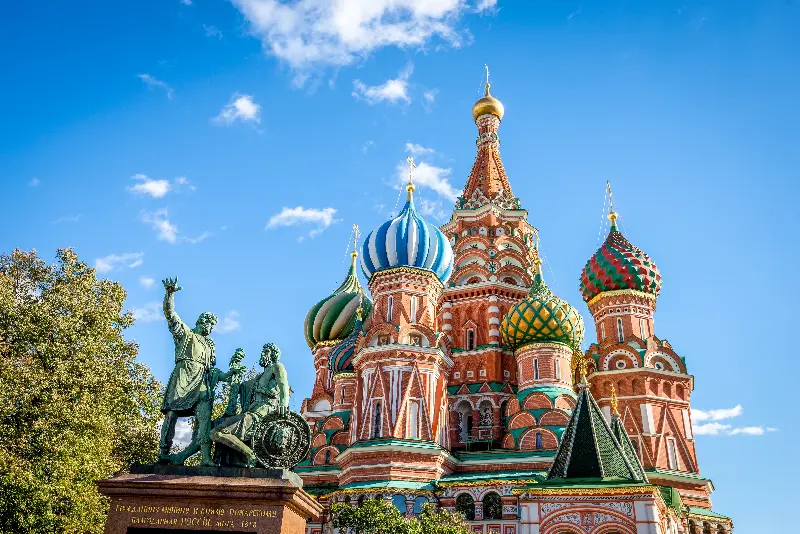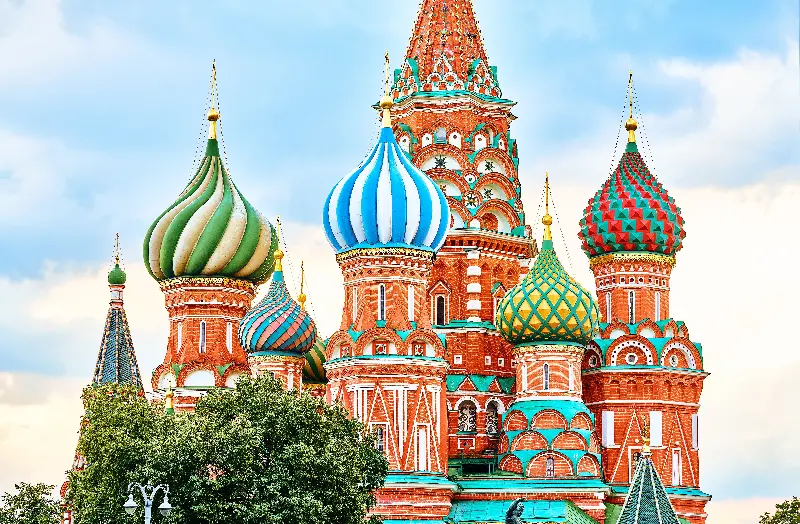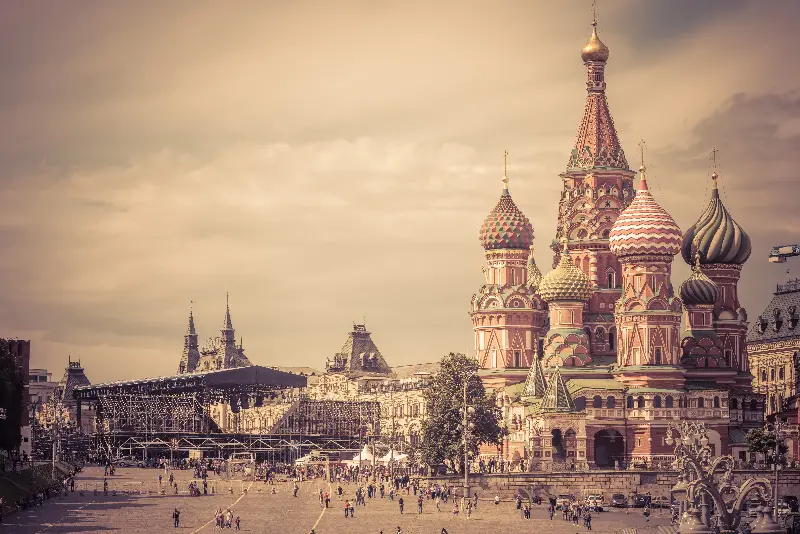Standing tall and radiant in Moscow’s Red Square, Saint Basil’s Cathedral is more than a masterpiece of Russian architecture—it’s an emblem of culture, history, and fairytale-like charm. With its dazzling colours and whimsical domes, the cathedral has enchanted visitors from every corner of the world for centuries. While it’s instantly recognisable, Saint Basil’s story holds many curious and even mysterious details that make it a landmark unlike any other.

Origins Rooted in Triumph
Saint Basil’s Cathedral was commissioned by Ivan the Terrible, the legendary Tsar of Russia, in the mid-16th century. Its construction began in 1555 and finished just six years later, standing as a testament to victory. The cathedral was built to commemorate the capture of Kazan and Astrakhan, two key victories that helped consolidate Ivan’s power. Its formal name is actually the Cathedral of the Intercession of the Most Holy Theotokos on the Moat, but it is most widely known by the name of Basil the Blessed, a revered local saint buried on the cathedral grounds.
Legend has it that Ivan was so overwhelmed by the cathedral’s beauty that he ordered the architects to be blinded, ensuring no building could ever rival its majesty. While historians debate the truth of this grim story, it adds a layer of intrigue to the already dramatic history of the cathedral.

A Kaleidoscope of Colours and Shapes
One of the most enchanting aspects of Saint Basil’s Cathedral is its unique design. Rather than being a single structure, it is actually a cluster of nine individual chapels built on a single foundation. Each chapel is topped with its own dome, and no two domes are alike. This creates the effect of a collection of whimsical towers, each adorned with swirling patterns, bold stripes, and geometric motifs.
Interestingly, the original design was not the vivid burst of colour we see today. The cathedral was initially painted in shades of white and gold. The bright, jewel-toned palette was added over the centuries, with the most dramatic changes taking place in the 17th and 18th centuries. The current rainbow of reds, greens, blues, and yellows is thought to be inspired by the descriptions of heaven in the Book of Revelation.
Architecturally, the cathedral fuses traditional Russian, Byzantine, and even Asian influences. Its tented roofs and onion-shaped domes became a defining feature of Russian architecture, influencing church design across the nation for generations.

Surviving Centuries of Change
Saint Basil’s Cathedral has stood through the tides of time, bearing witness to the dramatic tale of Russia itself. Over more than 450 years, it has withstood threats from both natural disasters and political strife. During Napoleon’s invasion in 1812, the French emperor reportedly ordered the cathedral to be blown up, but a timely rainstorm extinguished the fuses. During Stalin’s rule, the building was again threatened; plans to demolish it to make way for military parades through Red Square were narrowly halted after architect Pyotr Baranovsky famously refused to sign its demolition order.
The cathedral has changed hands and purposes multiple times. It spent years as a church, functioned as a museum under Soviet rule, and continued to confound both locals and tourists alike. Despite war, revolution, and changing ideologies, Saint Basil’s has remained at the heart of Moscow’s identity.

A Place of Legend and Lore
Romanov tsars, Soviet officials, and countless visitors lingering for photos—Saint Basil’s Cathedral has stories to tell. Among Russian legends is the belief that Basil the Blessed, the “holy fool” known for his charitable deeds and prophetic insight, foresaw the end of Ivan the Terrible’s reign. His simple grave by the cathedral’s walls soon drew pilgrims, and the church became as much a symbol of sanctity as splendour.
Below the cathedral lies a warren of labyrinthine corridors, some connected to ancient tunnels that have long provoked the curiosity of adventurers and historians. During World War II bombings, locals even sheltered in the cathedral’s thick stone chambers, a testimony to its enduring role as a guardian of the city.
Modern Marvel and Cultural Treasure
Today, Saint Basil’s Cathedral stands not just as an architectural icon but as a living part of Moscow’s soul. It is a World Heritage Site, welcoming millions who gaze in wonder at its spiralling cupolas and step through its historic thresholds. Inside, visitors find a surprising contrast. The cathedral’s exterior may burst with colour and light, but its interiors are intimate, with narrow passageways, painted vaults, and gently flickering candles.
The cathedral is celebrated in everything from literature to cinema, symbolising both Russian identity and the kaleidoscopic diversity of its culture. It often serves as the vibrant backdrop to national celebrations, and its fairy-tale appearance can make even a grey Moscow day seem touched by magic.
Saint Basil’s Cathedral tempts travellers from around the globe with its glorious silhouette and fascinating history. Whether you visit to explore its sacred chapels, marvel at the artistry of its domes, or simply to sip coffee while gazing across Red Square, this fairytale landmark continues to cast its unforgettable spell.
